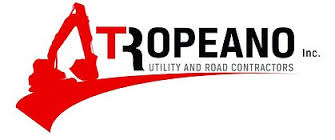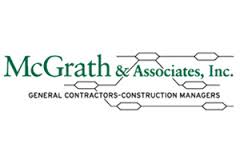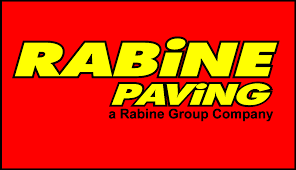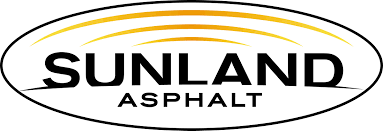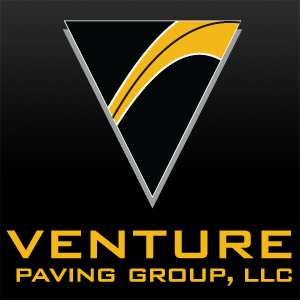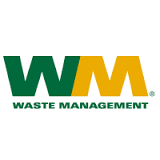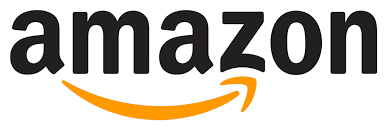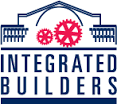News
EPA Announces $79 Million Investment from President Biden’s Bipartisan Infrastructure Law to Protect and Restore the Columbia River Basin
Aug 10, 2022
Up to $6.9 million in Clean Water Act and Bipartisan Infrastructure Law funding will be awarded to reduce toxics in fish and water, address climate impacts in communities throughout the Basin
PORTLAND – Today at an event along the Columbia River in Portland, Oregon, U.S. Environmental Protection Agency Administrator Michael S. Regan announced the $79 million investment from President Biden’s Bipartisan Infrastructure Law to protect and restore the Columbia River Basin. Today’s announcement includes $6.9 million in Bipartisan Infrastructure Law and Clean Water Act grants to be awarded this year for projects to reduce toxics in fish and water and address climate impacts in communities throughout the Columbia River Basin. Administrator Regan was joined by EPA Regional Administrator for the Pacific Northwest Casey Sixkiller, Senator Jeff Merkley, Senator Ron Wyden, and tribal, state, and local leaders for the announcement.
“The Columbia River Basin is a vital economic engine and an irreplaceable environmental asset, providing a broad range of benefits from agriculture to recreation to electricity, but toxic contaminants in the basin pose a serious risk,” said EPA Administrator Michael S. Regan. “Through the investments from President Biden’s Bipartisan Infrastructure Law, we will make unprecedented progress in our efforts to restore and protect these waters, clean up harmful pollution and deliver economic and environmental benefits to the communities supported by the basin.”
The EPA Columbia River Basin Program received $79 million from President Biden’s Bipartisan Infrastructure Law. This funding provides EPA the ability to grow the Columbia River Basin Restoration Program and significantly increase competitive grants throughout the Basin to reduce toxics. EPA will be awarding 12 grants using infrastructure law funds in 2022 totaling $3.8 million. EPA plans to issue additional Requests for Applications in 2022-2023 using infrastructure law funds to increase toxics reduction through agricultural best practices, stormwater green infrastructure, pollution prevention, contaminated sites cleanup, and community education and engagement.
“Since time immemorial, communities throughout the Columbia River Basin have relied on the river for life and for the nutritional, economic, cultural, and spiritual gifts it provides,” said EPA Regional Administrator Casey Sixkiller. “Today we get to celebrate the vital work being done by our tribal, state, and local partners to preserve and protect this resource for future generations.”
“Water is the lifeblood of our state and our communities; from irrigation, to recreation and tribal traditions,” said Senator Jeff Merkley (D-Ore.), who amended the Clean Water Act to create the Columbia River Basin Restoration Program. “We must do everything we can to keep our rivers and waterways clean and healthy. Funding from the Columbia River Restoration Program will reduce toxic contaminants in the Basin so folks can totally enjoy boating and fishing in Oregon waters. Thanks to the Bipartisan Infrastructure Law, we are providing $79 million to fund grants for this long-term effort.”
“This is great news for the Columbia River Basin and all the Oregonians pulling together to protect this iconic waterway from toxics so it continues to be a scenic treasure that creates joy and generates economic strength for generations to come,” said Senator Ron Wyden (D-Ore.). “These resources from the Bipartisan Infrastructure Law I was proud to support will help Oregon build a national model that employs best practices for agriculture, develops green infrastructure, promotes pollution prevention; and increases citizen education and involvement.”
EPA announced the following grants as examples of how this program is building community and tribal government capacity around the Basin. This announcement includes seven initial grants totaling $1.8 million focused on toxics reduction, community engagement, and pollution prevention projects occurring throughout the Basin. An additional 18 projects will be funded by later this fall.
-- Salmon-Safe Columbia Basin Pledge: Accelerating water quality protection in the Columbia Basin ($342,000 – funded by Bipartisan Infrastructure Law) Salmon-Safe will build on the successful roll out of Salmon-Safe initiatives in interior Columbia Basin tributaries that were implemented with the first phase of EPA funding. Salmon-Safe Columbia Basin Pledge will scale up activities in these tributaries, particularly in Idaho, while introducing a new Trout-Safe initiative across western Montana and the Wyoming portion of the Teton River Valley and upper Snake River. Salmon-Safe will roll out the Columbia Basin Pledge, engaging 250 farmers across multiple crop sectors and other large-scale land managers, in actions to protect downstream water quality. Earning Salmon-Safe certification will require that these mostly large-scale, diversified farms reduce or eliminate the use of pesticides that are harmful to fish and wildlife, and reduce runoff and wind erosion, while also improving soil health, riparian habitat, irrigation efficiency, and protecting wildlife habitat and enhancing native biodiversity. The project is a long-term strategy to reduce toxics and enhance climate resiliency in the watershed, while demonstrating market support to maintain viable farming operations.
-- Pesticide Behavior Change Project of Oregon & Southwest Washington ($347,412 – funded by Bipartisan Infrastructure Law) The City of Gresham, Oregon, will implement Phase II of the Pesticide Reduction Outreach (PRO) Campaign, previously funded by an EPA Columbia River Basin Restoration grant. This project will be managed by the City of Gresham, the Clean Rivers Coalition Steering Committee, and its partners. The PRO Campaign will focus on reducing human exposures and environmental releases of residential and commercial pesticides. This project will launch pilot projects geared towards residential Do-It-Yourself lawn care audiences and small business Hispanic/Latino lawn care landscapers without pesticide licenses. The project help reduce pesticide use by teaching and engaging the key audiences about integrated pest management techniques and benefits.
-- Columbia River Pollution Education and Outreach Project ($125,452) Columbia Riverkeeper will help reduce toxic pollution in the Columbia Basin by conducting youth and community pollution education and outreach. The project will promote citizen engagement and knowledge about EPA’s priority toxics and pollution reduction programs through school, community, and online engagement and by educating and inspiring students and community members on sources of toxic pollution, reduction strategies, and actions to prevent pollution. This project builds on and expands Riverkeeper’s successful Columbia Gorge Pollution Prevention Outreach and Education Program funded by EPA in 2020 and 2021. Specifically, the project will provide high-quality, field and online-based toxic pollution education to 1,200 kindergarten through community college students from diverse communities in the Columbia River Gorge.
-- Reducing PFAS and Phthalates in Local Water Systems within the Columbia Basin ($118,044) Oregon Association of Clean Water Agencies (ACWA) will work to produce actionable information for ACWA and its member agencies to reduce and better assess sources of per- and polyfluoroalkyl substances (PFAS) and phthalates in municipal wastewater and stormwater systems. The results of this effort will advance water quality improvement strategies for two priority chemical classes of emerging concern and will directly inform ACWA’s approaches for addressing other types of toxic pollutants through its prospective Toxics Reduction Strategy.
-- Engaging Communities to Monitor Mercury Risk in the Columbia River Basin ($349,919) Oregon State University (OSU) will work to implement a fine-scale, community-based mercury monitoring network in the Willamette River Valley to document trends in biotic mercury contamination at a fine scale across various environmental and demographic gradients, identifying pollution drivers, and informing safer fishing practices. Using established curricula, OSU will engage and educate community scientists to sample dragonfly larvae as mercury bioindicators (in a “biosentinel” network), connecting people to the freshwater systems on which they depend, and increasing public knowledge of mercury risks to ecosystem and human health.
-- Columbia Slope Water Quality Monitoring Phase 2 ($246,860) and Waste Incentive Network ($255,837) The City of Vancouver, Washington, will collect 18 months of water quality data at ten locations along the Columbia Slope to accurately establish current conditions, provide baseline data for future trend analysis, and determine the effectiveness of stormwater management practices. Water quality data will also be used to identify and prioritize outfall basins where future stormwater treatment retrofits would be effective in removing contaminants that are currently reaching the Columbia River. In a separate project, the city will work with its existing waste hauler, Clark County Public Works, and other private waste haulers, to improve dangerous waste disposal for business and multi-family residential waste through a project called the Waste Incentive Network. The city will reduce pollution and threats to human and aquatic health by encouraging proper waste disposal and raising awareness about the water pollution risks of improper waste disposal.
What they are saying
Kathleen George, Oregon Environmental Quality Commission Chair and Confederated Tribes of the Grand Ronde Tribal Council member said, “The need is huge. The time is now. Our fish and rivers can’t wait. We have built and fed our communities on the riches of our rivers. We have taken but very rarely do we give back. This investment of $79 million will jump start the much needed work of reducing toxic pollution that harms our waters and everyone who relies on them.”
“The Umatilla Tribes have worked for decades with our federal and state partners to protect our First Foods; the water, the fish, big game, the roots and berries,” said Confederated Tribes of the Umatilla Indian Reservation Tribal Council Corrine Sams. “Pollution threatens those foods as well as each and every one of us. Together we can restore those foods and the environment on which they depend.”
"With support from EPA, Columbia Riverkeeper will help to reduce toxic pollution in the mid-Columbia,” said Columbia Riverkeeper Executive Director Lauren Goldberg. “We are excited to keep up the community-based momentum for a clean Columbia with high-quality online, field- and classroom-based pollution prevention education to community members and students from diverse communities in the Columbia River Gorge."
“Salmon-Safe has partnered with environmentally innovative farmers in the mid-Columbia Basin for more than a decade to introduce market-based incentives for water quality protection and habitat restoration practices on agricultural lands,” said Salmon-Safe Executive Director Dan Kent. “With support from EPA Columbia River Basin Restoration Program, Salmon-Safe is scaling up our grower outreach, farm assessment, and market recognition efforts throughout the interior Columbia Basin, building new partnerships with place-based conservation organizations and tribal governments across the region, including upper Snake River tributaries. We look forward to building on this work with a new Columbia River Pledge to significantly expand the audience we activate in our water quality protection and salmon recovery efforts, including beginning to engage urban developers in cities like Spokane and Boise.”
“The City of Vancouver is excited to launch the Waste Incentive Network; we will use this program to reduce pollution and threats to human and aquatic health by promoting proper waste disposal,” said City of Vancouver Interim Surface Water Manager Kris Olinger. “Additional water quality monitoring along the Columbia Slope will help us identify and prioritize stormwater retrofit projects to remove contaminants from urban road runoff that discharges to the Columbia River.”
Background on the Columbia River Basin
The Columbia River Basin covers 260,000 square miles, 16 federally recognized tribes, across seven states including Oregon, Washington, Idaho, Montana, and Wyoming. The Basin provides benefits including commercial fisheries, agriculture, forestry, recreation, and electric power generation. Human activities have contributed toxic contaminants to the environment and throughout the Basin, fish species have accumulated contaminant levels that are harmful to people and wildlife. Toxics in fish are a primary health concern for Columbia River Basin tribal people and other high fish consumers.
Congress amended the Clean Water Act in 2016 by adding Section 123, establishing a Columbia River Basin Restoration Program to develop a voluntary, competitive grant program for eligible entities to fund environmental protection and restoration programs throughout the Basin. In 2020, EPA awarded $2,053,903 in 14 grants throughout the Basin to tribal and state governments, municipalities, NGOs, universities, and other entities. These grant projects are implementing and developing monitoring, promoting agricultural best practices, building green infrastructure, and increasing pollution prevention and public engagement and education.
The Columbia River Basin Restoration Program is focused on engaging tribal and underserved communities in efforts to identify and reduce threats to their environment and community health. EPA’s commitment to reducing toxics in fish and water in the Columbia River Basin is key to EPA’s ongoing trust responsibility to tribal governments. Toxics reduction will support climate resilience for the Columbia River Basin ecosystem by reducing aquatic ecosystem and human health stressors in an environment stressed by severe climatic events.
Learn more about the Columbia River Basin at https://www.epa.gov/columbiariver.
# # #
Contact: Suzanne Skadowski, EPA Public Affairs, 206-553-2160, [email protected]
Seamless Registration







